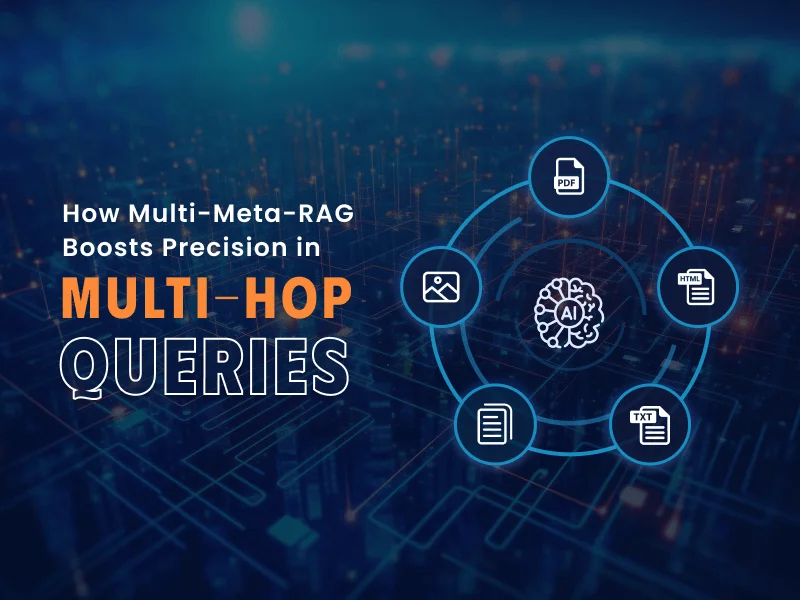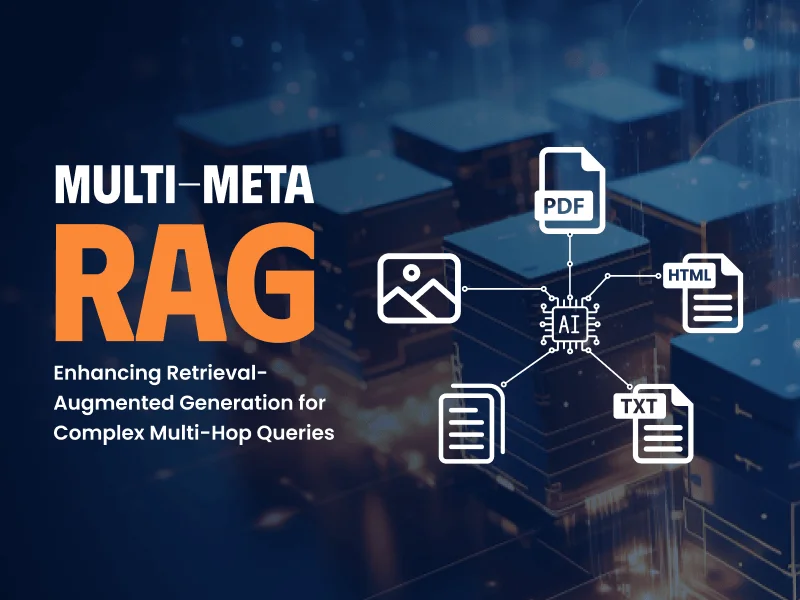Recognizing the numerous benefits it offers, businesses have accepted generative AI as a catalyst for future growth and new innovations. Its adoption and utilization in the business world are gradually increasing.
Gartner, for example, finds that 70% of executives are actively exploring generative AI, while 19% of executives have already moved beyond exploration and are piloting or using generative AI in practical applications. These numbers indicate a substantial level of interest and involvement in this technology among executives. Adoption of generative AI by enterprises indeed boosts work efficiency and outcomes. But like most significant changes that happen as quickly as generative AI adoption is rolling out; this also brings imminent security threats.
A recent survey conducted by Salesforce raises concern about generative AI and its impact on data security. 71% of surveyed senior IT leaders believe that generative AI will introduce new risks to data. 54% of them expressed the need for improved security measures to protect their businesses against potential cybersecurity threats that may arise due to the use of generative AI.
It seems clear that generative AI’s adoption and utilization are as crucial as addressing its security and governance concerns. This has left businesses struggling to understand its impact, practical applications, and associated risks. Ultimately, they are looking to mitigate the risks and boost the rewards to make the most of this technology.
Stay with us to explore the crucial aspects of security and governance that are all-important in unlocking the full potential of generative AI.
Understanding Security and Governance in Generative AI
The increasing buzz around generative AI innovation has mixed responses. Calls for AI regulations are rising and as its usage scales, so do the imminent threats. Security and governance are considered the core pillars of businesses adopting new tools or technologies. Neglecting these aspects can lead to data breaches, ethical concerns and cyber fraud. Such breaches have a lasting impact on both organizational revenue and reputation.
Protecting intellectual property from an unauthorized access or attack is also crucial in the context of generative AI. Organizations must ensure a secure and responsible deployment of this new-age technology to shield themselves, their employees and customers against such risks.
Benefits of establishing robust security and governance practices for Generative AI:
Increased consumer trust : Implementing robust security measures, adhering to governance frameworks and assurance of protected data enhances earns organizations trust from their customers.
Intellectual Property protection : Intellectual Property (IP) protection involves securing proprietary generative AI models to preserve competitive advantage and prevent unauthorized use. This includes implementing robust security measures to maintain confidentiality and integrity. Legal safeguards like patents, copyrights, and trademarks are established to defend against infringement.
Compliance with data protection regulation : Generative AI system process and generate content using user data. Governance ensures that such data is used in compliance with existing global regulations like CCPA and GDPR. This includes providing clear information about how AI systems process personal data, maintaining accurate records of data processing activities, and ensuring that AI-generated decisions respect individuals’ rights and freedoms.
Enhance transparency and explainability : Transparency and explainability in generative AI models and their outputs ensure the trust of users and stakeholders, reducing the risk of bias, discrimination or unexplained decision-making.
New Horizons, New Risks –3 Biggest Risks of Generative AI
The reality is that continuous progress and implementation of generative AI is unstoppable. In the current market landscape, no available tools can assure risk-free usage.
It is important that businesses consider the possible risks of unregulated and ungoverned generative AI implementation:
Data privacy : The interaction with generative AI solutions, risk of exposing sensitive enterprise data is evident. Security breaches can lead to unauthorized access to such information. These applications may store user inputs and utilize them to train other models, thus, a threat to confidentiality.
Hallucinations and fabrications : Generative AI models if not trained on client and unbiased data can lead to factual errors, hallucinations, off base or wrong responses, which could create legal and reputational risks.
Cybersecurity concerns : Cyber threats such as malware and phishing schemes cannot be taken lightly. Unregulated or ungoverned generative AI implementations could invite attacks from miscreants and can have severe consequences, including data breaches, financial loss and reputational damage.
Proactive Approaches for Managing Risks of Generative AI
As we integrate generative AI into business processes, it's important to prioritize data privacy and security. Here are key considerations and mitigation strategies:
Establish Policies and Best Practices: Organizations should implement guidelines and policies governing the use of generative AI tools, both internally and externally. These policies will help regulate the proper and responsible use of the technology and set realistic expectations for its capabilities.
Compliance and Regulations: Organizations should regularly evaluate their regulations to ensure that generative AI tools align with legal, compliance and ethical obligations.
Data Privacy and Cloud Processing: Organizations should review the terms and legal documents of generative AI tools thoroughly with respect to data privacy and sensitive information. They should prioritize the use of AI tools that have established contracts and provide control over the processing of sensitive data.
Stay Updated on Regulations: Organizations should not miss out on government rules and regulations. By staying informed about the continuously evolving governance mechanisms and frameworks proposed by regulators worldwide, organizations can effectively manage risks.
From Policy to Practice: Generative AI Governance
Regulators across the globe are taking action to address the concerns around generative AI. The European Union has issued guidelines to regulate AI and Italy has temporarily banned the use of generative AI models. Recently the US government, too, had a meeting with Google, Microsoft, Open AI, NVIDIA, Hugging Face, and Stability AI on regulating AI with a responsibility-first mindset.
Even as government regulations evolve, the adoption of Generative AI is growing rapidly. So, it is upon businesses to form stringent guidelines to fortify themselves, their employees and customers against imminent threats well in time, without restricting the innovation capabilities of Generative AI as a technology. The establishment of clear guidelines and policies is crucial in defining boundaries and limitations for generative AI systems. It is equally important to implement governance frameworks that incorporate monitoring and auditing mechanisms to ensure compliance with these established policies.
The process of corporate Generative AI policy and implementation at the enterprise level requires leaders’ careful attention on:
Fostering internal communication – To effectively utilize generative AI tools, organizations need to foster internal communication regarding their use, associated risks, and potential use cases. Clear guidelines should be established to govern the use of these tools, with an emphasis on viewing them as supportive tools in conjunction with human expertise.
Prioritizing holistic development – Organizations need to create an effective policy for generative AI, considering the security and governance implications in the complete lifecycle of the technology, including input data, AI system usage, and output utilization.
Include IT, legal, compliance teams – A cross-functional approach ensures that all aspects, including technical, legal, and regulatory considerations, are adequately addressed. Legal and compliance requirements should be integrated into generative AI implementation plans to ensure adherence to regulations and minimize legal risks.
Consider current and future state – Internal teams must collaborate with stakeholders to identify and compile a list of both internal and external scenarios where generative AI is currently being utilized or anticipated to be used. This thorough examination will serve as a valuable foundation for policy development, ensuring that all relevant situations are considered and addressed appropriately.
Choosing the Right Generative AI Implementation Partner
Not every AI implementation partner is made equal, and definitely not when the technology is evolving at the pace at which it is. It is important that businesses find an implementation partner with the relevant expertise to innovate without losing sight of security and governance best practices.
Enterprises should prioritize the following key factors when choosing their Generative AI implementation partner:
- Holistic experience with AI deployment in recent years
- In-house AI expertise, often demonstrated with a specialized practice group of experts
- Experience with AI implementation in large global organizations
- Close attention to privacy standards and regulations and certifications, where necessary
Why Partner with Acuvate for Generative AI Solutions for Enterprises
Acuvate brings seasoned AI expertise in AI deployments, with over 16 years of experience implementing cutting edge solutions for diverse business functions in Fortune 500 companies. In recent weeks, our AI expertise has solidified into a strong practice converging our learnings from over the years with new developments in the Generative AI space. This has resulted in GPT-based solutions across multi-function enterprise chatbots, knowledge management, data management and much more.
Org Brain, our one-of-a-kind GPT framework, is built to grow with your company.
The Org Brain processes and analyzes the connected data using LLM models like as GPT, allowing users from various user personas or cohorts inside the organization to ask questions and receive diagnostic, predictive, and prescriptive solutions depending on their individual areas of interest. All while protecting data security and privacy by limiting data access and GPT model training within your enterprise.
With an ecosystem approach to Generative AI, Acuvate’s partnerships with experts like Microsoft, Automation Anywhere, and Blueprint ensure high speed innovation with careful attention to risk and governance. Our customers are prepared to deploy Generative AI at scale and pace, confidently. How about you?
Summing Up
The adoption of generative AI presents immense opportunities for businesses across industries. However, to fully leverage its benefits and maintain customer trust and reputation, organizations must prioritize security and governance. By addressing security considerations, implementing governance best practices, and collaborating across teams, businesses can minimize risks, ensure ethical usage, and unlock the transformative potential of generative AI while safeguarding their assets and reputation.
Embracing generative AI with a focus on security and governance will pave the way for a future of innovation and responsible AI adoption. Take decisive action and embrace the potential of generative AI by implementing best practices in security and governance, ensuring steady progress and improved outcomes.
Talk to Acuvate to minimize the risks and maximize the rewards of Generative AI.
To mitigate the risks and maximize the rewards of Generative AI implementations.



